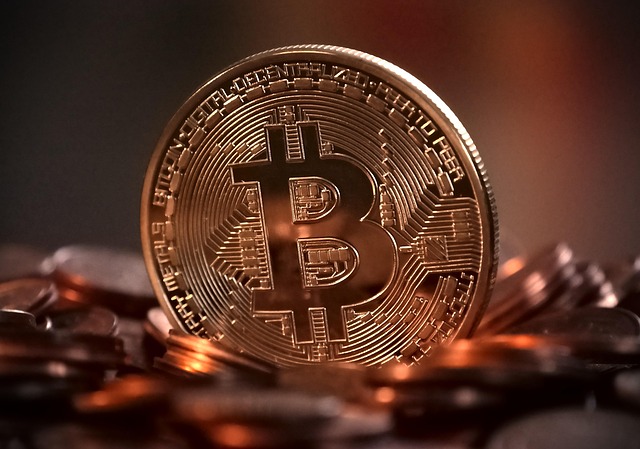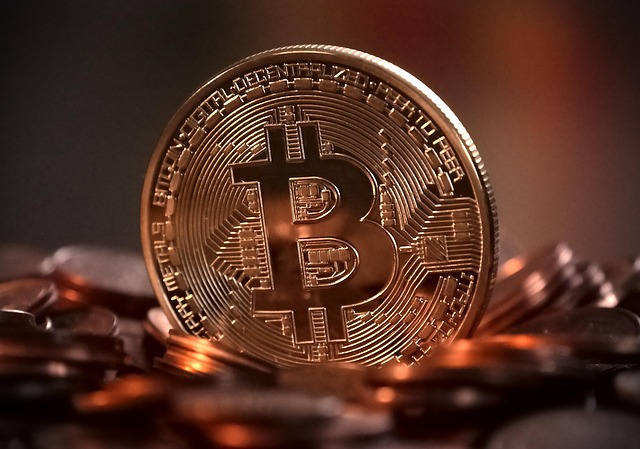Why Is Bitcoin So Slow Today: Causes & Fixes
Author: Jameson Richman Expert
Published On: 2025-11-02
Prepared by Jameson Richman and our team of experts with over a decade of experience in cryptocurrency and digital asset analysis. Learn more about us.
Why is bitcoin so slow today is a frequent query when transactions take much longer than expected. This article explains the technical and market reasons behind slow confirmations, shows how to check the network in real time, offers practical fixes (for users, exchanges and businesses), and outlines the long‑term scaling solutions that will improve throughput. Read on for actionable steps, useful tools, and links to reliable resources so you can respond quickly when the network lags.

Quick answer: why is bitcoin so slow today?
Bitcoin can be slow when the network experiences unusually high demand, resulting in a crowded mempool and a competitive fee market. Other causes include miner/relay disruptions, spam or DoS-like activity, wallet or exchange processing delays, and temporary network forks. Slow confirmations mean transactions wait longer for miners to include them in blocks, and low fees make the wait worse. Below we unpack each cause and provide concrete actions you can take right now.
How Bitcoin’s fundamentals determine speed
To understand delays, you must first understand Bitcoin’s basic constraints:
- Block time: Bitcoin aims for an average block every ~10 minutes. That limits how many transactions the network can confirm each hour.
- Block capacity: Effective block capacity is governed by block size and SegWit discounting expressed in “weight units.” This limits throughput to roughly 3–7 transactions per second (TPS) depending on transaction types.
- Fee market: When demand exceeds capacity, users compete by paying higher fees to get prioritized by miners.
For an official high-level overview, see the Bitcoin page on Wikipedia and educational material at Bitcoin.org.
What is the mempool and why does it matter?
The mempool is where unconfirmed transactions wait. When mempool size rises, estimated confirmation times climb and wallets increase fee estimates. A large mempool usually indicates high activity (trading, market panic, bots, or spam).
Monitor mempool stats at tools like mempool.space or Blockstream Explorer to see current backlog and fee estimates.
Main reasons “why is bitcoin so slow today” — detailed causes
1. Sudden surge in on‑chain activity
Major market moves, large exchange withdrawals/deposits, or coordinated token distributions can create a spike in transactions. When many people send on‑chain transactions simultaneously, the mempool fills and miners prioritize the highest-fee transactions.
2. Fee market and underpriced transactions
If you set a fee below the current market rate, miners will deprioritize your transaction. Wallets that use conservative fee estimates or default to low fees will see longer waits. In volatile periods, fee estimators can lag actual requirements.
3. Exchange or custodial delays
Sometimes perceived slowness is due to exchanges batching withdrawals, internal hot/cold wallet policies, or manual review processes. Exchanges may queue withdrawals to save fees via batching, or temporarily halt withdrawals during extreme market volatility. If you initiated a withdrawal and it’s slow, first check the exchange status page.
4. Miner behavior and hash rate shifts
Changes in global hash rate (for example miners switching chains, power outages, or maintenance) can temporarily increase average block times or create fewer blocks per hour, causing slower confirmations.
5. Network-level issues and propagation
Large or malformed blocks, connectivity problems among nodes, or slow block propagation can temporarily impact confirmation speed and increase orphan rates, reducing effective throughput.
6. Spam or DoS-like activity
Attackers occasionally send many low-fee transactions to congest the network or exploit fee estimation. While developers have mitigations, such activity can still increase waits.
7. Wallet or node policy differences
Different wallets implement fee estimation, Replace-By-Fee (RBF) support, and child-pays-for-parent (CPFP) differently. A wallet that doesn’t use RBF or CPFP leaves users with fewer options to accelerate transactions.

How to check whether Bitcoin is slow right now (real-time diagnostics)
Before taking action, confirm whether the network is congested and whether the delay is on‑chain or at the exchange/wallet:
- Check mempool size and fee estimates: mempool.space.
- View recent blocks and transaction volume: Blockstream Explorer or Blockchain.com.
- Check Bitcoin network status on official channels or forums; exchanges post notices on their status pages or Twitter/X.
- If you used an exchange, check its withdrawal history and support announcements—often delays are exchange-side.
These steps will help you determine whether the problem is global or specific to your wallet/exchange.
Practical actions you can take when transactions are slow
Here are concrete fixes for different user types.
If you’re an individual sender
- Use a fee estimator: Let the wallet suggest a fee based on mempool conditions. If your wallet’s estimate seems low, manually increase the fee.
- Enable Replace-By-Fee (RBF): If supported, mark transactions as RBF so you can bump the fee later.
- Use Child-Pays-For-Parent (CPFP): If your wallet or recipient supports CPFP, send a second transaction with a high fee to incentivize miners to include both.
- Consider SegWit addresses: SegWit transactions use weight discounts and often cost less and confirm faster. Use bech32 (bc1) addresses when possible.
- Use Lightning for small/fast payments: For microtransactions and many consumer payments, the Lightning Network gives near-instant confirmations off‑chain. See Lightning documentation at Bitcoin.org (search Lightning resources) or Lightning resources at major clients.
If you’re waiting on an exchange withdrawal
- Check the exchange’s status page and support notice—often withdrawals are held for batching or security checks during volatility.
- Contact exchange support with your transaction ID (TXID) and ask whether the transaction has been broadcast and how many confirmations are required.
- Consider moving to exchanges with faster withdrawal processing or better liquidity for the asset (some users prefer exchanges with robust hot wallet infrastructure). Popular options include Binance, MEXC, Bitget, and Bybit.
If you run a business, exchange, or payment processor
- Batch withdrawals: Consolidate multiple payouts into a single transaction to reduce fees and avoid contributing to mempool congestion.
- Pre-fund hot wallets: Keep an appropriate hot/cold split so that urgent withdrawals do not depend on slow cold wallet movements.
- Use dynamic fee bumping: Implement RBF and automated CPFP workflows to accelerate customer transactions when necessary.
- Offer Lightning or custodial instant options: For micropayments and time-sensitive payments, integrate Lightning Network channels or custodial instant settlement services to avoid on-chain delays.
Advanced tools and techniques to accelerate stuck transactions
If your transaction is stuck, try these options:
- Replace-By-Fee (RBF): Resend the same transaction with a higher fee if your wallet supports it.
- Child Pays For Parent (CPFP): Send a new transaction spending the stuck output with a high fee to incentivize miners to include the parent.
- Transaction accelerators: Some mining pools offer transaction accelerators where you submit your TXID and they may include it for a fee or free in their next mined block. Use cautiously—verify pool reputation.
- If all else fails, wait: Low-fee transactions often eventually confirm when mempool pressure eases.

How market moves and trader behavior make Bitcoin feel slow
When market volatility spikes, traders execute many more on‑chain transfers (exchanging between exchanges, entering/leaving positions, or settling futures). That increased activity creates congestion and higher fees, which is why slowness often coincides with big price moves. If you’re trading or planning trades, consider strategies to reduce on‑chain friction:
- Use exchange native margin/funding to avoid moving BTC on-chain.
- Use stablecoins or on‑exchange transfers for quick repositioning when possible.
- Learn from futures professionals — articles like Most Successful Futures Traders — Lessons From The Pros discuss risk management that helps during congested periods.
For analysis specifically tying on‑chain activity to price expectations, see the BTC price discussion at BTC Price Drop Prediction & Risk Signals.
Long‑term scaling: why Bitcoin will get faster (and how)
Bitcoin’s base layer intentionally favors security and decentralization over raw throughput. That said, a layered roadmap improves speed and costs:
- SegWit adoption: Introduced in 2017 to increase effective block capacity and reduce transaction malleability. Continued adoption reduces average fees and improves throughput.
- Taproot and Schnorr signatures: Upgrades like Taproot (activated 2021) improve privacy and efficiency, enabling more complex smart contracts with smaller on‑chain footprints.
- Lightning Network: Layer‑2 solution for instant, low‑cost payments. Wider merchant and wallet adoption shifts many small transactions off‑chain.
- Sidechains and rollups: Sidechains (e.g., Liquid) and future second‑layer rollups/proposals can shift settlement load away from main chain.
For developers and businesses, keeping systems Lightning‑ready and using SegWit addresses helps reduce on‑chain demand and improves user experience.
When to use alternative chains or tokens
If you need fast, low‑cost settlement and Bitcoin on‑chain speed is unacceptably slow, some users turn to other chains for certain use cases. For instance, XRP is designed for faster finality in cross-border payments. For insight into an alternative like XRP and its outlook, see the analysis at XRP Price Prediction & Future Outlook.
Important: Moving between chains introduces counterparty and bridge risks. Consider the tradeoffs: speed vs security, decentralization, and custodial exposure.

Examples of past congestion events
Learning from history helps anticipate future issues:
- Late 2017: Massive retail and ICO activity drove the mempool to weeks-long waits for low-fee transactions.
- Volatility events: Flash sell-offs or whale moves (e.g., large exchange withdrawals) have periodically spiked on‑chain demand and pushed fees up.
- Targeted spam: Researchers and attackers have occasionally broadcast many low-fee transactions to test or stress fee estimation, temporarily increasing mempool size.
In most cases, congestion is transitory. When demand drops or miners increase capacity, mempool pressure eases within hours to days.
Checklist: what to do when you notice slowness
- Confirm network congestion via mempool.space or Blockstream Explorer.
- Verify whether your delay is exchange-side (check exchange status).
- If your wallet supports RBF, use it to bump fees; otherwise consider CPFP.
- Consider Lightning for small, urgent payments.
- For frequent traders, use exchanges with robust hot wallet systems; recommended platforms include Binance, MEXC, Bitget, and Bybit.
- Learn fee estimation and use SegWit/bech32 addresses to reduce cost.
Additional resources and further reading
- Bitcoin — Wikipedia (technical overview and history)
- How Bitcoin Works — Bitcoin.org
- mempool.space — mempool & fee data
- Blockstream Explorer — block and TX details
- BTC Price Drop Prediction & Risk Signals — context for price-driven congestion
- Lessons From Successful Futures Traders — trading risk management useful during network slowdowns
- XRP Price Analysis & Alternative Settlement Options

Conclusion: be proactive when Bitcoin is slow
“Why is bitcoin so slow today” usually comes down to supply and demand on the blockchain, fee choices, and sometimes exchange or miner behavior. The good news is that most slowdowns are temporary and manageable with the right tools. Use mempool monitors, leverage RBF/CPFP where supported, adopt SegWit addresses, and consider Lightning for recurring or micro payments. Businesses should implement batching and dynamic fee management to reduce customer impact.
Finally, stay informed: keep an eye on network explorers and exchange announcements, and plan trading or large transfers around times of lower on‑chain demand. If you trade actively, study risk management and execution strategies — resources like the futures trader lessons linked above can help you prepare for high-latency scenarios.
If you want to open accounts on major exchanges to reduce settlement friction or to access margin/liquidity options, consider registering through these platforms: Binance, MEXC, Bitget, and Bybit.
Use the steps in this article as an operational checklist the next time you ask, “why is bitcoin so slow today?” — and you’ll be able to respond faster and smarter when the network delays occur.